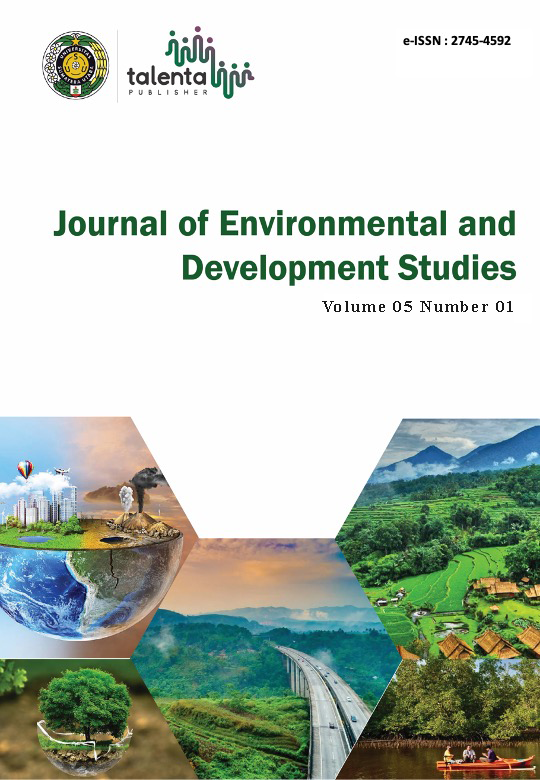Analysis of Flood Inundation Vulnerability to the Deli Watershed of North Sumatra Using Remote Sensing and GIS Techniques
DOI:
https://doi.org/10.32734/jeds.v5i01.12340Keywords:
Flood Inundation, Deli River Basin, Overlay Scoring, Remote SensingAbstract
Deli watersheds are listed as one of the most heavily damaged watersheds in Indonesia, and this causes many problems, such as floods, flash floods, and landslides. Studying this watershed becomes essential because the Deli watershed passes through a major city and has become the main source of flood and other natural disasters in the city such as Medan, The study aims to detect the vulnerability level of the areas around the watershed and the most rapid and possible way to study it is by using remote sensing and GIS, the overlay method by considering several parameters that affect the level of vulnerability to flooding in Deli Watershed, North Sumatra. Some of the parameters considered include the topographic wetness index, slope, land elevation, river flow density, land use cover, normalized difference vegetation index, distance to river, and rainfall. Each parameter is given a weight and value according to each classifier. The overlay process is carried out using ArcGIS 10.8.1 software, results are divided into 5 levels of area vulnerabilities all around the area, the study shows that all parts of Medan City in the Deli watershed have a high level of flood vulnerability and some areas with higher ground elevation such as Tanah Karo have spots area that is vulnerable with floods such as Daulu District with 0.45 ha and Semangat Gunung District with 0.63 ha of its areas are vulnerable to floods. The Topographic wetness index, Normalized difference vegetation Index, slope, and land use are the main factors causing flooding with weighting values 16, 13, 11, and 14. The other parameters elevation, flow density, distance to the river, rainfall, and soil class each have weighting values 7, 10, 11, 8, and 10. Slope with a range of 0-8% in most areas of Medan City are classified as very prone to flood inundation. This is due to the area's flat topography and low river flow density, the existing 3.5 km old sewer in the Deli Tua area is unable to accommodate the flood inundation load in the city of Medan and it is necessary to build two new sewers which are more effective and efficient in diverting the flow of water, before entering the city of Medan which makes the area vulnerable to becoming a water catchment area when it rains, thereby increasing the risk of flooding. With this flood-prone map, efforts to manage and mitigate floods in Medan City can be carried out. Information on vulnerable locations can be used to take appropriate preventive and countermeasures, such as building adequate drainage, regulating land use, and controlling river flows.
Downloads
Downloads
Published
Issue
Section
License
Copyright (c) 2024 Journal of Environmental and Development Studies

This work is licensed under a Creative Commons Attribution-ShareAlike 4.0 International License.














